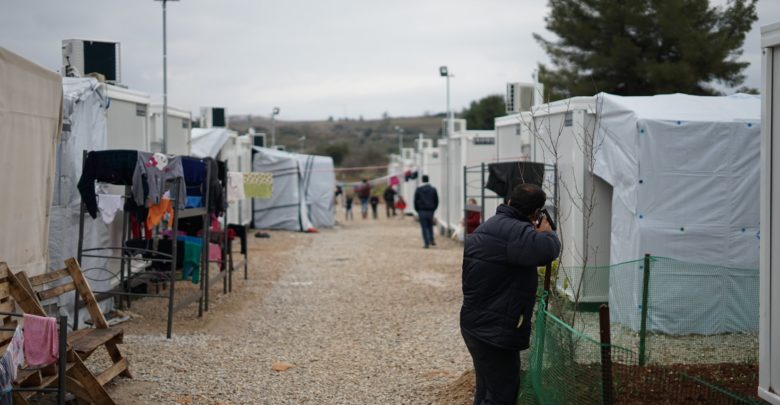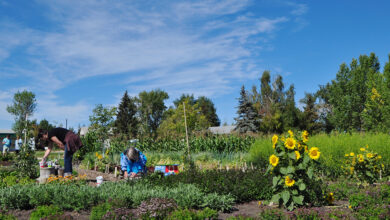We must improve refugee camps through resilient infrastructure development
Actions must be taken to address the inadequate living conditions in refugee and internally displaced person camps
 Supplied: Julie Ricard
Supplied: Julie RicardWar, conflict, disaster, displacement, disease, death, and devastation — all ominous words that we have come to collectively associate with settings of socio-political turmoil.
From the growing insurgency of Boko Haram in Northern Nigeria and Cameroon, to new unrest with Islamic militants in Mozambique to intensifying ethnic tensions in Sudan and Ethiopia’s Tigray region, and ongoing wars in Syria5, Yemen, and Afghanistan, the threat of mass displacement still looms heavily in the air. By mid-2020, there was an estimated 80 million people forcibly displaced worldwide.
Meanwhile, pathways to resettlement and safe return are becoming increasingly scarce, with fewer durable solutions being found for refugees amidst the pandemic, according to a report by the United Nations High Commissioner for Refugees (UNHCR), the United Nations (UN) refugee agency.
All of this has culminated in prolonged residence of displaced persons in refugee and internally displaced persons (IDP) camps. One estimate by a UNHCR spokesperson placed the average time that a refugee spends in these temporary settlements at 16 years. Often referred to as “refugee warehousing,” this leads to protracted situations of restricted mobility, forced idleness, and dependency.
If such conditions mean that “temporary settlements” essentially become semi-permanent dwellings, there is a strong argument to be made that they be equipped with the necessary infrastructure to support the long-term health and safety of those forced to call them home.
Yet evidence indicates that refugee camps are disproportionately placed in climate-vulnerable regions prone to extreme weather, flooding, wildfires, and droughts. Indeed, such sights are often set up in notably inhospitable places, in a makeshift effort to distance them as far as possible from host communities fearful of disruption. The current effort to relocate Rohingya refugees to the remote, allegedly inhabitable Bhasin Char island is one notable example.
Geographic vulnerability combined with intensifying climate change, precarious housing, and inadequate living conditions has resulted in several refugee and IDP camps being overcome by extreme weather events in recent years. In Tongogara camp in Zimbabwe, for example, around 2,000 homes were completely or partially damaged by cyclone Idai.
Heavy rains have caused several incidences of flooding and landslides in the Cox’s Bazar camp in Bangladesh, where Rohingya refugees are sheltered. In Bentiu, South Sudan, where a camp was built under emergency conditions in a wetland, the 2014 rainy season meant the collapse of 175 latrines, leading to surges in both cholera and malaria.
Acutely aware of the risks that extreme weather presents, the UNHCR has developed emergency shelter standards to ensure robustness to seasonal weather patterns and adequate protection from the elements.
In the development of longer-term solutions, they call for shelters to be adapted to the geographical context, climate, and sociocultural norms, making use of locally available skills and resources, where possible.
Still, political pressures from host governments constrain the space to maneuver when developing more robust camp infrastructure. To prevent displaced persons from settling in host countries indefinitely, it is not uncommon for host governments to ban the use of more permanent building materials by persons residing in refugee and IDP camps.
The forced demolition of concrete homes built by Syrian refugees in Lebanon, for example, has relegated a population of over one million displaced Syrians to life in shelters made of canvas and wood. Prone to imminent destruction by wildfires, increasingly common across the Middle East, this is a far cry from the climate-resilient infrastructure that experts have called for. Even more, it is an assault on the dignity of displaced persons as they endeavour to become self-reliant while rebuilding some semblance of normality amid prolonged uncertainty.
In response to the dual threat that such restrictions pose to the safety and dignity of persons residing in refugee and IDP camps, UNHCR, UNICEF, and other prominent global actors involved in camp planning and management must advocate for concessions from host governments. Refugees must be empowered to create their own housing solutions.
With such permissions, the scope of possibilities would be substantially widened; the skills and capacities of refugees could be mobilized in the design and construction of more durable housing units, building community resiliency.
This would go a long way in ensuring that refugees and displaced persons are protected against further threats to their health, safety, and well-being, as they endure the long haul of a tenuous life with no clear end in sight.




